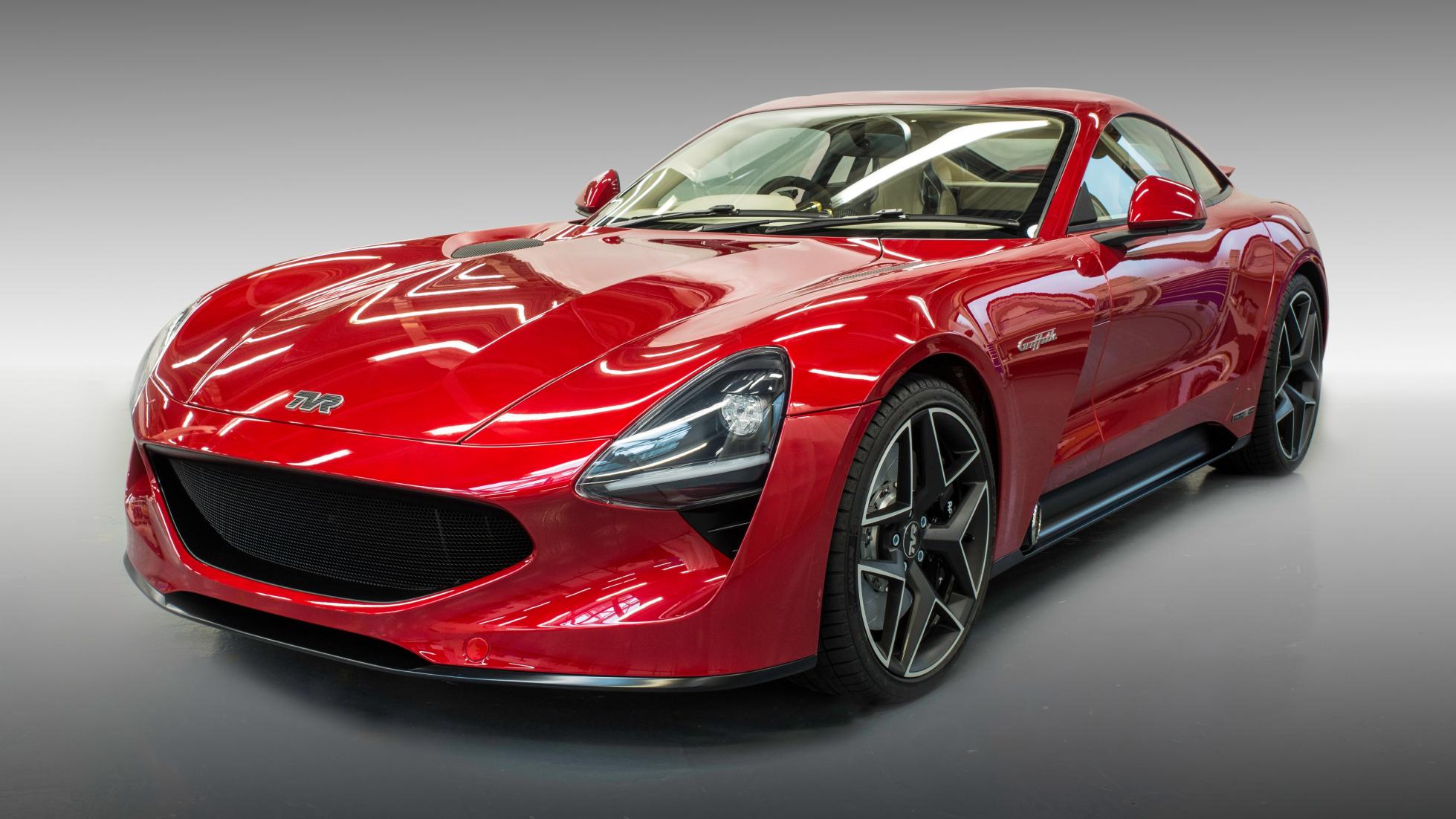
Who knows what the car-shunning Millennials make of it all, but for an entire generation of sports car fans, TVR equates to unruly high performance, perilous sideways excursions and, if we’re completely honest, a frequently challenging ownership experience.
Now meet the all-new, 21st century TVR, the first since a wealthy consortium – headed by computer games magnate and entrepreneur Les Edgar – wrested the company away from Nikolai Smolenski in 2013. The name is familiar: the Griffith first appeared in 1963, but reappeared in 1991. That model is probably the definitive TVR, so it makes sense to dust the badge down for this keenly-awaited revival. Well, it wasn’t going to be Trousertenter, was it?
In many other ways, this stunning looking new car – side-exit exhausts, sculpted front wheelarches, and swoopy body – stays true to TVR’s homespun, old-school recipe. It packs a trusty atmospheric 5.0-litre quad-cam V8, the unit usually seen in Ford’s Mustang, but thoroughly overhauled for duty here by Cosworth to deliver more power and torque. It’s dry sumped to lower the centre of gravity, and has 50/50 weight distribution. You’ll look in vain for any seamless, dual-shift semi-auto transmission: the Griffith uses a Tremec Magnum six-speed manual (even that sounds manly), with a custom lightweight flywheel and clutch, and bespoke gear ratios. With a dry weight of 1,250kg, the new car is tantalisingly light, and boasts a power-to-weight ratio of 400bhp-per-tonne. This should thrust the Griffith into full-bore supercar territory, where forward motion begins to turn surreal: 0-100mph in six and a bit seconds surreal, with a 200mph top speed. And you have to remember to change gear yourself.
But in other key areas, the new Griffith is revolutionary. It’s the first production car to deploy Gordon Murray Design’s iStream technology, which simplifies the manufacturing process while introducing carbon fibre and delivering the sort of structural rigidity TVRs of old could only dream of (the Cerbera, as lovely as it was/still is, almost visibly sags in the middle). The chassis consists of a carbon composite bonded to steel and aluminium, with body panels also in composite. The iStream tech gives the Griffith notable crash performance: the energy loads are directed through front and rear crash structures, leaving the chassis intact. It also has a fully flat underfloor so if a 200mph mission does present itself, you won’t end up troubling air traffic control. Aero? On a TVR?
[“Source-topgear”]




